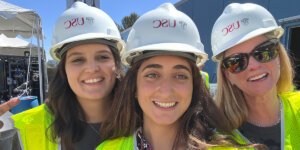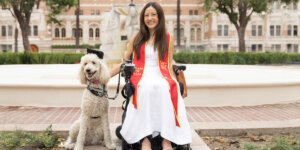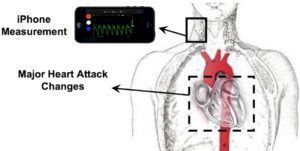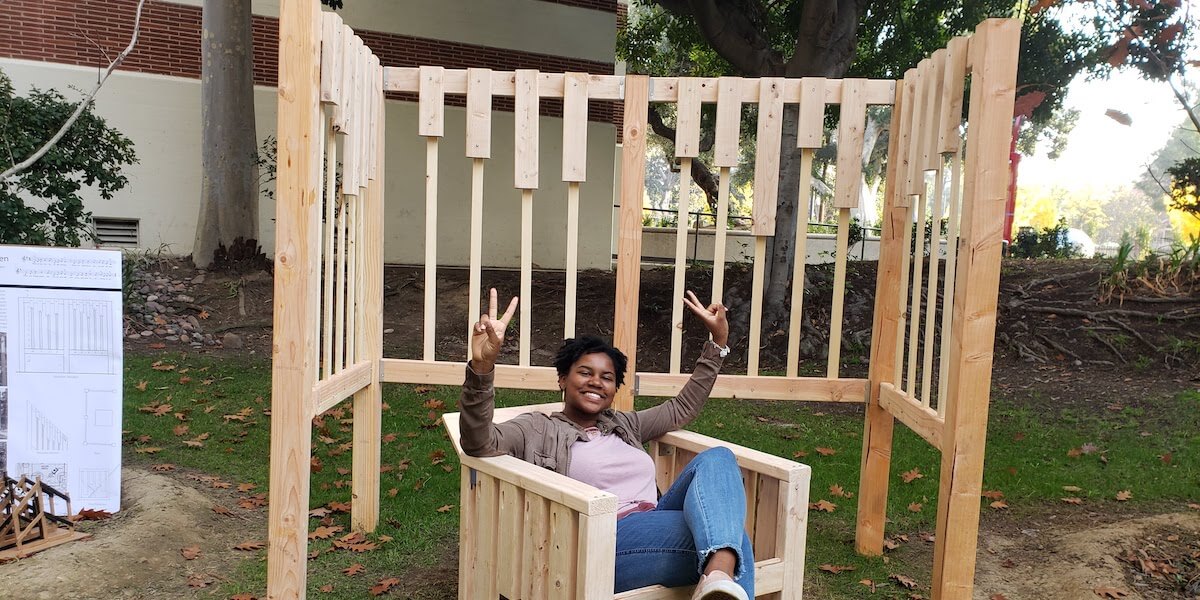
Brown pictured with her Building Science studio project in 2019. She and her team built everything in wood to represent the phenomenon of music. PHOTO/JESSICA BROWN.
At the nexus of what makes USC special to its students is the ever-present emphasis on the Trojan community. For Jessica Brown, a USC Viterbi junior, the importance of who and what surrounds her has always been integral in driving her purpose. A building science major in the Sonny Astani Department of Civil and Environmental Engineering, she grew up 15 minutes outside of Washington, D.C. in Clinton, MD. She and her family lived in the same house and neighborhood her entire life.
Brown originally thought she’d pursue a career in medicine, but when she was seven, Brown’s mother sent her and her older brother to architecture camp. Subsequently, she continued to explore STEM related activities, such as working with Lego robots in sixth grade, an experience she regards as “one of the most frustrating, but also one of the most enjoyable.”
Her penchant for problem solving was bolstered by a desire to make an impact on the people around her. Brown’s mother, a community activist and attorney, was always urging Brown and her brother to make their voices heard and to do their part in preserving, protecting and prospering their local community. In first grade, following an accident at school that resulted in Brown getting stitches, Brown’s mother urged her to speak in front of the school board to ask for funding for safer school infrastructure and higher quality supplies.
“The school I went to was really rundown. My mom showed us the power of using your voice to advocate for yourself and your community,” Brown said.
Brown’s parents shared with her the changes happening in “Chocolate City,” the nickname characterizing Washington, DC’s large Black population. Their discussions of gentrification and displacement of Black residents in DC inspired her own research on related topics such as zoning and red lining in further detail on her own.
In tenth grade, Brown wrote her first research paper documenting the actions that contributed to the creation of the “American ghetto,” neighborhoods characterized by low income, minority residents in places like DC, Philadelphia, New York and other major metropolitan cities. “It [the paper] solidified my desire to combine my interest in engineering with the built environment and how I can use engineering to affect the built environment for the betterment of people.”
Advocating for Support
Brown hasn’t just used her mother’s lessons to advocate for her local communities, but also to create space of her own growth and success. “A lot of the communities that I have built and found around me are examples of how I’ve advocated for myself.”
Among key support groups Brown mentions as pivotal to her undergraduate experience is USC Viterbi’s Center for Engineering Diversity—specifically the Viterbi Summer Institute in which she enrolled months prior to beginning her freshman year at USC.
“It was really hard my sophomore year being a woman in engineering, being Black in engineering. I felt a little bit out of it, not interacting with my peers as much and not feeling supported as much,” she said. Instead of letting herself succumb to feelings of being an outsider, she sought out communities that made sense to her.
Brown said: “Having a community of people [such as CED and the National Society of Black Engineers] underrepresented in engineering who were available to mentor me or answer questions about coursework was really important. Being able to advocate for myself and find the people I needed was big for me.”
Brown grew from membership chair of the National Society of Black Engineers (NSBE) to vice president, motivated largely by a desire to “return the favor.” She says she benefited from early advice and access to internships and wants to pass the same lessons and motivation along to underclassmen.
“The more people who succeed, the better it is and the easier it gets. I like to share the wealth. There is enough for everyone,” she said.
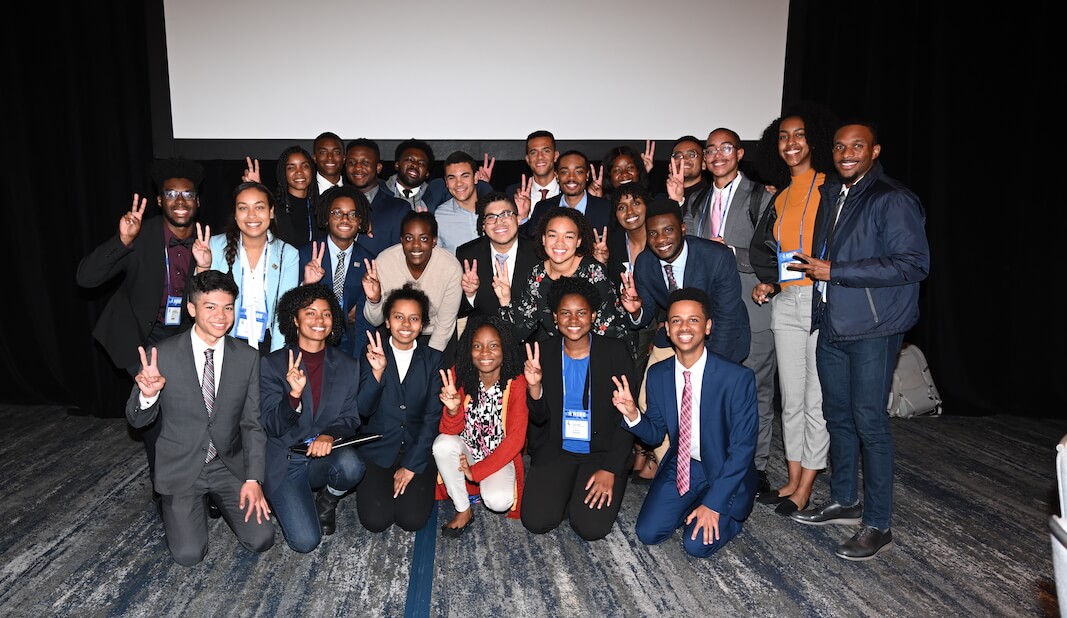
Brown pictured with members of the National Society of Black Engineers (NSBE). PHOTO/RILEY STOKES.
Intersectionality at USC
Brown knows from her mother’s years of local advocacy and activism that community organizations work best when their efforts are collaborative and cooperative. Looking forward
Brown wants to expand beyond her own support networks and create more partnerships across organizations on campus.
“One of the things we speak about at NSBE is being able to share the perspective of underrepresented engineers with other people,” she said. “There needs to be what I call more ‘aha’ moments where people are like, oh, I realized that the experience of a Black female engineer is wildly different from my experience. I want to make more opportunities for connections with different people on campus. It is very easy at USC to stay in your bubble—I want to reach across the School of Engineering and the university in general and be more intentional about the intersectionality of our various bubbles. It’s a way for me to learn and for others to learn.”
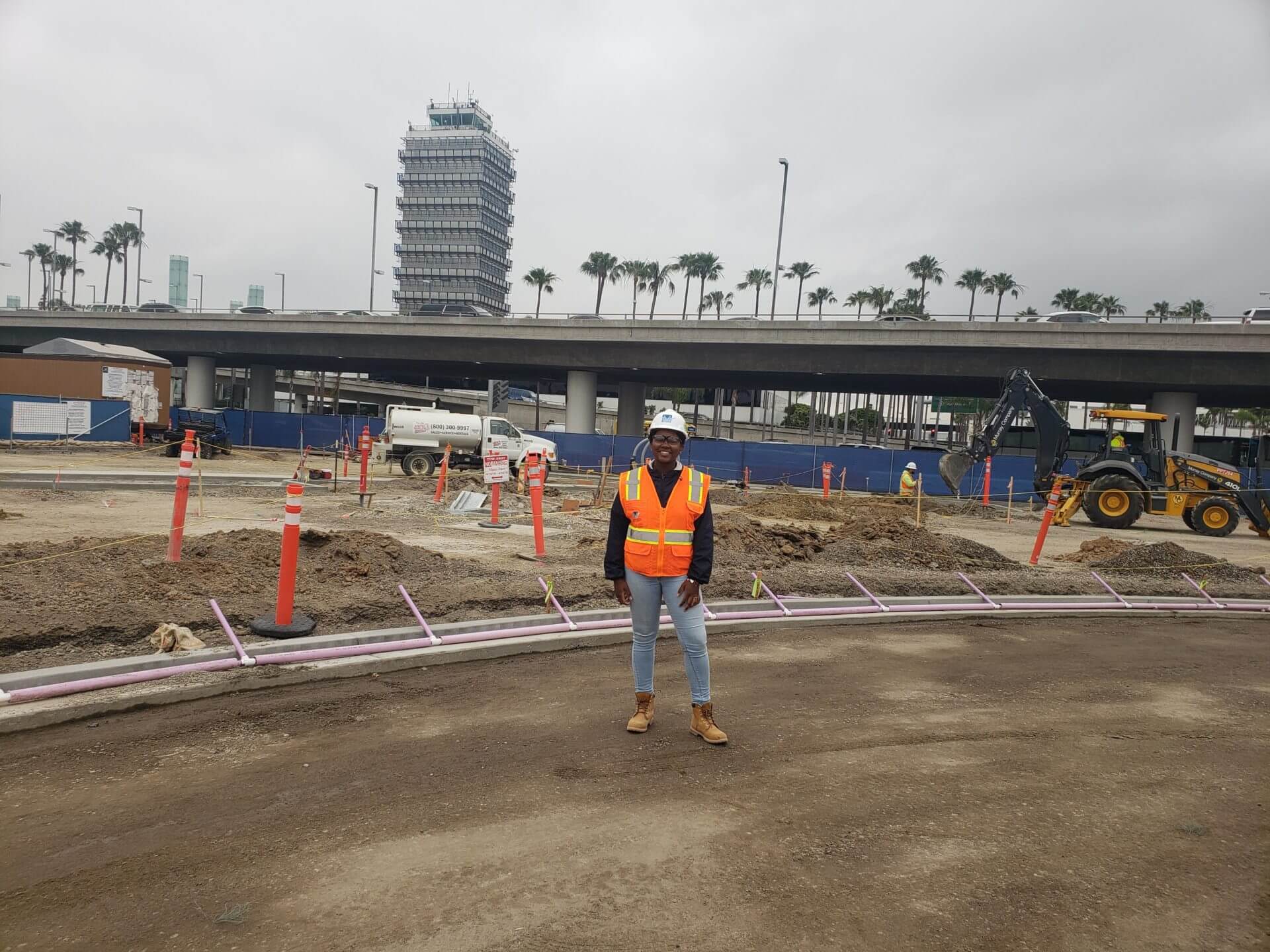
During the summer after her freshman year, Brown interned with the general contractor Swinerton and worked on the LAX-it Project (then called Interim Ground Access). PHOTO/JESSICA BROWN.
In terms of her career, she’s looking into the intersection of physical infrastructure with social infrastructure—specifically through transportation engineering.
She said: “I want to use my technical knowledge to make communities better and give people access to the services they need. Transportation gives you physical mobility, but it’s also a form of social mobility. It gets you to your place of education, to your job, to healthcare services,” Brown said.
The Next Generation
As she nears the end of her junior year, Brown points to two main lessons she’d like to share with younger students just starting out in STEM: be curious and find your support system.
“The reason I got into leadership positions is because I asked questions and put myself out there. I admitted I don’t know anything and put myself in a position where I could learn from others,” she said. At the same time, she continues to emphasize community.
“If I had not gone to the CED summer institute or become a part of NSBE, my life would’ve been completely different. Find a group where people share your interests or beliefs and are able to support you. I definitely could not have done this alone.”
Brown is the recent recipient of a scholarship from WTS-LA and Environmental Science Associates, which provides support to women studying transportation.
Published on February 9th, 2021
Last updated on February 11th, 2021




